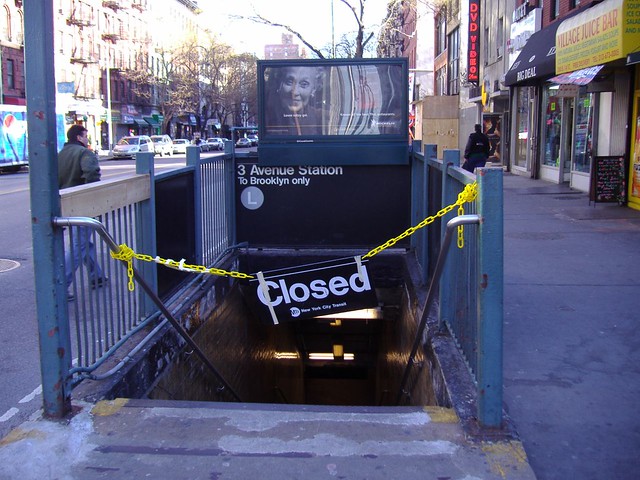As I’ve delved into the politics of the MTA and New York City’s love-hate relationship with the subway system, I’ve often believed that transit riders are an untapped political constituency. Most New Yorkers can’t be bothered to learn the intricacies of the MTA’s bureaucratic structure or understand who in our city or state government has proper oversight over the authority. New Yorkers blame the MTA for its institutional, political or economic failings whether it deserves to bear the full brunt of the blame or not.
Part of the problem is one of numbers. The Straphangers Campaign is basically three people with limited money, and Transportation Alternatives doesn’t focus exclusively on transit. There’s just one subway rider advocate on the MTA Board, and somehow these organizations are supposed to represent the interests of five million commuters who just want to get home quickly, maybe have a seat and not pay more for less service.
The other problem is one of message. It’s hard to craft a tale that is both compelling and informative. Take, for instance, the recent Trans Alt survey that found riders unhappier with their commutes in 2011 than they were two years ago. That’s a very negative message, and while Transportation Alternatives leaders stressed Albany’s role in our declining service offerings, the headlines splashed across the front of the city’s newspapers concerned only the unhappiness and not the cause. We can talk, but nothing will change if no one is listening.
The third problem perhaps is one of scope. In a piece for City Room that highlights just how riders are left out of important MTA decisions, Clyde Haberman last week spoke with rider advocates. What should riders want, he asked. The answers:
Too bad that whenever the [union] negotiations resume, an important party will not be at the table. This would be the group of New Yorkers who are supposed to be the bosses of both other parties. We’re referring, of course, to those who ride the subways and buses. Oh, sure, the other sides will say they have nothing but the riders’ interests at heart, and maybe there is some truth to that. But, as ever, a passengers’ representative will not be present…
To fill the vacuum, we turned to a couple of people who have a good sense of what’s on the minds of many commuters. All we asked is that they skip demands like lower (or at least stagnant) fares and improved (or at least not worsened) service. Who doesn’t want those things? But fares are bound to rise, and more frequent trains and buses do not seem in our immediate future. “People are concerned about the cleanliness of stations — that’s a big thing,” said William A. Henderson, executive director of the Permanent Citizens Advisory Committee, a branch of the transportation authority that is a voice for riders. There is “at least a perception” that stations have become dirtier, Mr. Henderson said.
Also, he said, riders want to see workers put back into vacant agent booths. “With the closing of the booths, people do remark on how lonely it is,” he said. “If something happens, you don’t know if anybody will be there to see it or do anything about it.” Those empty booths also troubled Gene Russianoff, staff attorney for the Straphangers Campaign, a riders’ advocacy group.
Russianoff also spoke of quickening the pace of activation of the countdown clocks as well as streamlining the MetroCard bonus system. Haberman himself called for an end to the alarms on the oft-abused emergency exits and a tidier system for the free newspapers that often flood station entrances. These are little quality-of-life upgrades that could improve the experience of riding in the morning.
Still, I can’t help but think that these are small and incremental ideas. Facing with a recalcitrant Albany, few people with prominent platforms are calling for a reprioritization of how we spend transportation dollars and allocate street space in New York City. Few are highlighting which representatives have repeatedly voted to withdraw money for transit funding that has led to fare hikes and service cuts. No one is calling for massive infrastructure investment on such a scale that would expand subway service as city planners once envisioned with the IND Second System.
Ultimately, we need a mixture of big and little. We need proposals to fix the funding mechanisms, ensure sounder oversight and improve the riding experience. Right now, though, who’s listening? New Yorkers are content to hate the MTA, hate their commutes and vote, over and over again, for the politicians responsible for this mess. It’s a never-ending cycle.
















 (42nd Street Shuttle)
(42nd Street Shuttle)